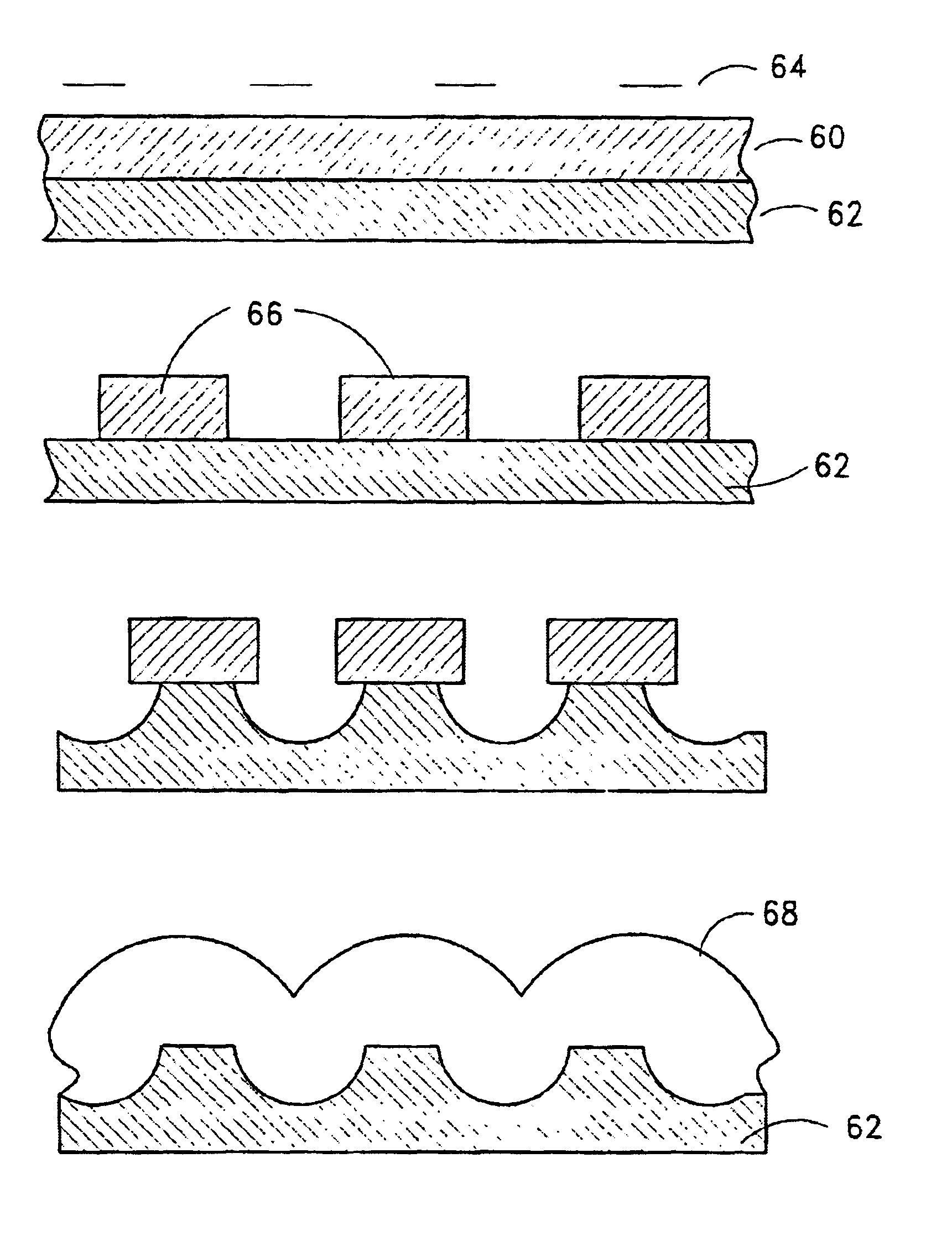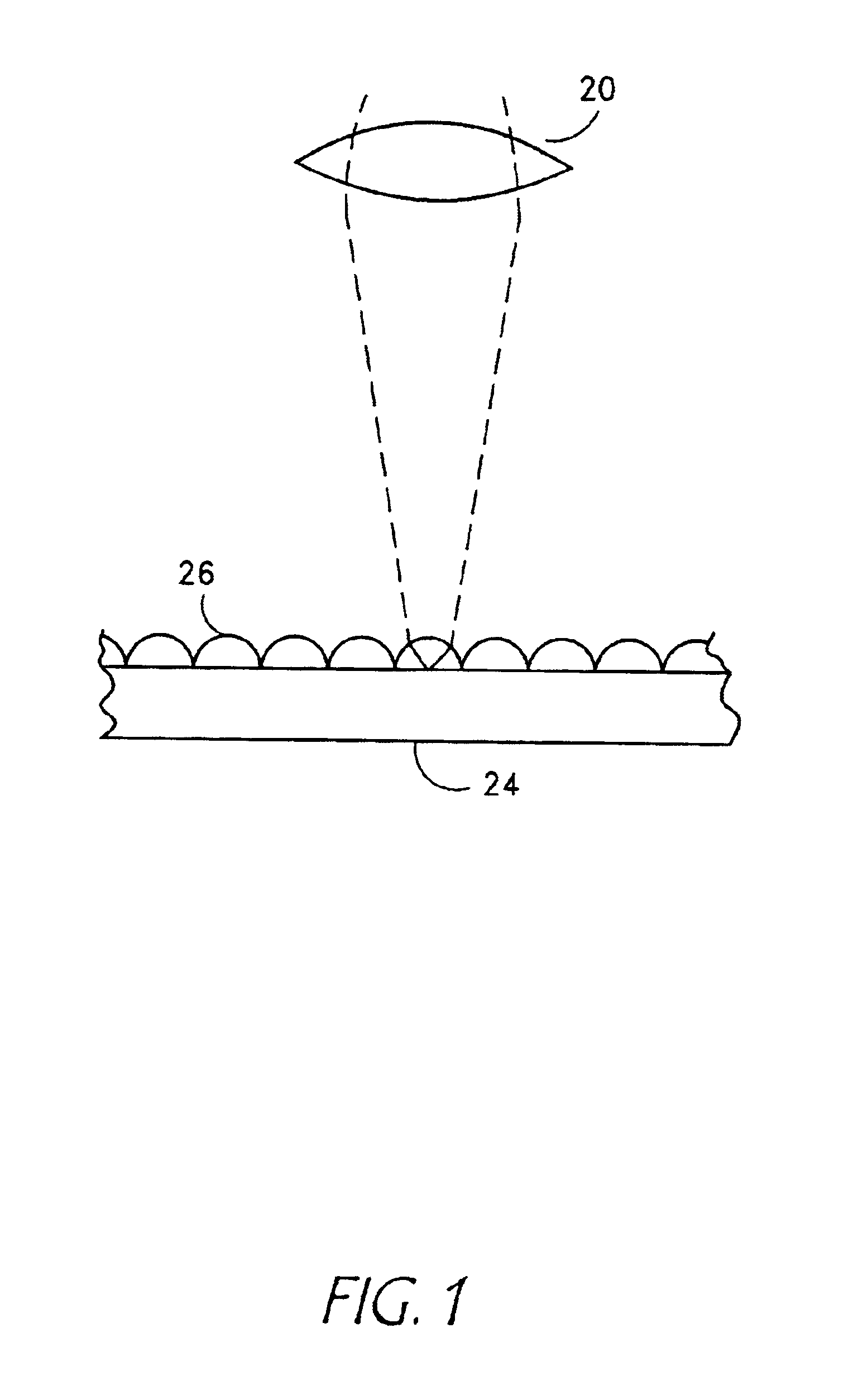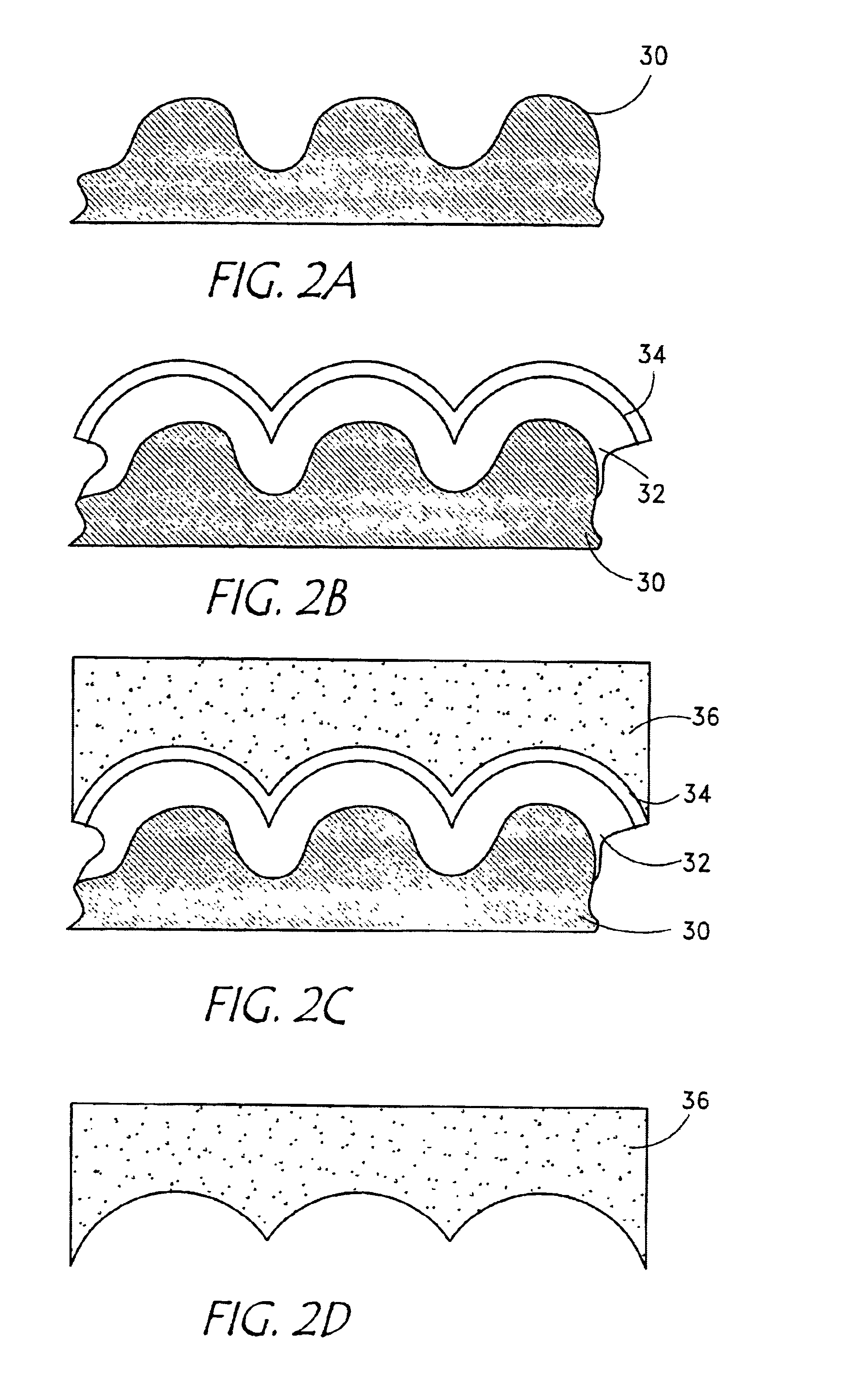Method of fabricating sub-micron hemispherical and hemicylidrical structures from non-spherically shaped templates
a hemispherical and hemispherical technology, applied in the direction of photomechanical treatment originals, instruments, photomechanical equipment, etc., can solve the problems of difficult to determine a priori, difficult to achieve a priori, and the lithographic process may easily suffer from irradiation power variation and/or instabilities
- Summary
- Abstract
- Description
- Claims
- Application Information
AI Technical Summary
Problems solved by technology
Method used
Image
Examples
Embodiment Construction
[0023]Embodiments of the invention will now be described with reference to the accompanying Figures, wherein like numerals refer to like elements throughout. The terminology used in the description presented herein is not intended to be interpreted in any limited or restrictive manner, simply because it is being utilized in conjunction with a detailed description of certain specific embodiments of the invention. Furthermore, embodiments of the invention may include several novel features, no single one of which is solely responsible for its desirable attributes or which is essential to practicing the inventions herein described.
[0024]Process steps for an advantageous method of fabrication of an inverse master or stamper are depicted in FIGS. 2A to 2D. As shown in FIG. 2A, the process begins with a grooved substrate 30 which may comprise glass, polycarbonate, or other polymeric material. The grooves may be fabricated by employing, for example, any one of a number of well-known techni...
PUM
| Property | Measurement | Unit |
|---|---|---|
| thickness | aaaaa | aaaaa |
| thickness | aaaaa | aaaaa |
| thickness | aaaaa | aaaaa |
Abstract
Description
Claims
Application Information
 Login to View More
Login to View More - R&D
- Intellectual Property
- Life Sciences
- Materials
- Tech Scout
- Unparalleled Data Quality
- Higher Quality Content
- 60% Fewer Hallucinations
Browse by: Latest US Patents, China's latest patents, Technical Efficacy Thesaurus, Application Domain, Technology Topic, Popular Technical Reports.
© 2025 PatSnap. All rights reserved.Legal|Privacy policy|Modern Slavery Act Transparency Statement|Sitemap|About US| Contact US: help@patsnap.com



